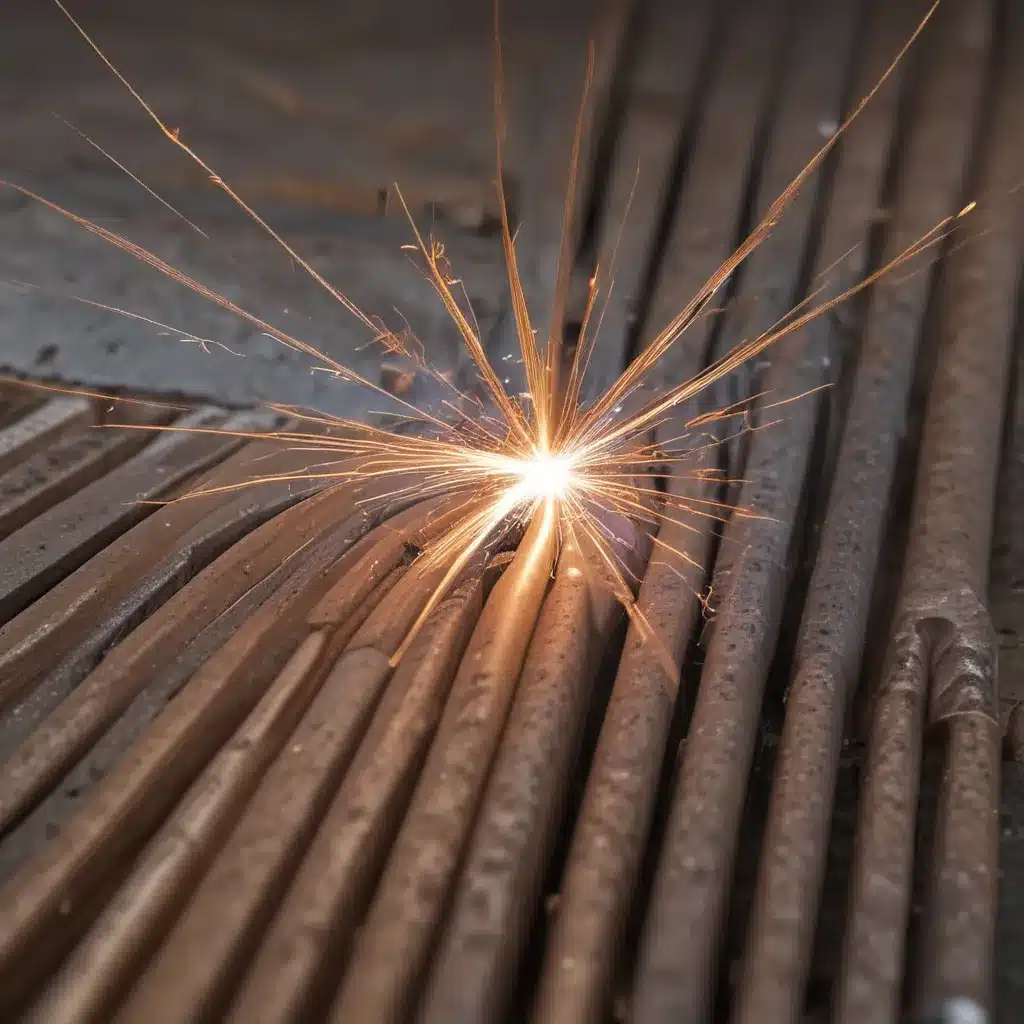
The Lowdown on Welding Consumables
As an experienced welder, I’ve spent countless hours hunched over a workbench, meticulously selecting the right welding rod or electrode for the job at hand. It’s a delicate dance, really – choosing the perfect match of filler metal, flux, and base material to create a strong, durable weld. And let me tell you, it’s not as simple as it might seem!
You see, there’s a whole world of welding consumables out there, each with its own unique properties and applications. It’s like trying to navigate a maze blindfolded, except the maze is made of molten metal and the stakes are, well, your entire project. But fear not, my fellow welding enthusiasts! I’m here to shed some light on the mysterious realm of welding rods and electrodes, so you can make informed decisions and produce top-notch welds every time.
The Building Blocks of a Good Weld
Let’s start with the basics – what exactly are welding rods and electrodes, and how do they differ? Well, my friends, they’re both essential components of the welding process, but they’re used in different welding techniques.
Welding rods, also known as filler rods, are used in processes like gas tungsten arc welding (GTAW) and gas metal arc welding (GMAW). These rods are fed into the weld pool, melting and adding filler metal to the joint. The composition of the rod is carefully selected to match the base material, ensuring a strong and durable connection.
On the other hand, electrodes are used in shielded metal arc welding (SMAW), also known as stick welding. These bad boys have a flux coating that helps to shield the molten weld from the atmosphere, preventing impurities and creating a clean, high-quality weld. The electrode itself acts as both the filler metal and the current-carrying component of the circuit.
Now, you might be wondering, “But wait, there are so many different types of welding rods and electrodes out there! How do I choose the right one?” Ah, a fair question, my curious friend. Let me break it down for you.
Selecting the Perfect Welding Consumable
When it comes to welding rods and electrodes, there’s no one-size-fits-all solution. The choice depends on a variety of factors, including the base material, the welding process, the joint design, and the desired weld properties.
For example, let’s say you’re working on a project that involves welding stainless steel. You might choose an ER308L or ER316L welding rod, as these are specifically designed for stainless steel applications and provide excellent corrosion resistance. But if you’re working with mild steel, an E6010 or E7018 electrode might be a better fit, as they’re optimized for that type of base material.
And the fun doesn’t stop there! You also have to consider the welding position – is it a flat weld, a vertical weld, or something in between? Different rods and electrodes are better suited for different positions, so you’ll need to do your homework to ensure you’re using the right one.
But wait, there’s more! The thickness of the base material also plays a role in your selection. Thicker metals might require a larger-diameter welding rod or electrode to provide enough filler material, while thinner materials might call for a smaller, more precise option.
Mastering the Art of Welding Consumables
Now that you have a basic understanding of welding rods and electrodes, let’s dive a little deeper into the art of mastering these essential welding tools.
One of the key things to keep in mind is the importance of proper storage and handling. Welding consumables are sensitive to moisture, which can lead to porosity and other defects in the weld. That’s why it’s crucial to keep them in a dry, climate-controlled environment, and to use them within their recommended shelf life.
Another important consideration is the welding technique itself. Different rods and electrodes require different welding parameters, such as current, voltage, and travel speed. Failing to adjust these settings can result in subpar welds, so it’s important to consult the manufacturer’s recommendations and practice your technique.
And let’s not forget about the all-important safety aspect. Welding rods and electrodes can contain hazardous materials, like chromium and manganese, that can be harmful if inhaled or ingested. That’s why it’s crucial to always wear appropriate personal protective equipment (PPE), such as a respirator, gloves, and a welding jacket, and to work in a well-ventilated area.
Expanding Your Welding Horizons
But the fun doesn’t stop there, my friends! As you continue to explore the world of welding consumables, you’ll discover that there’s always more to learn.
For example, did you know that there are specialized welding rods and electrodes designed for specific applications, like underwater welding or high-temperature environments? And what about the ever-evolving world of flux-cored arc welding (FCAW), where the flux is actually contained within the electrode itself? It’s a whole new frontier of welding possibilities!
And let’s not forget about the role of precision welding services in the world of welding consumables. These skilled professionals can help you select the perfect welding rod or electrode for your project, and can even custom-fabricate specialized consumables to meet your unique needs.
Putting It All Together
So there you have it, folks – a deep dive into the captivating world of welding rods and electrodes. From understanding the differences between filler rods and electrodes to mastering the art of proper storage and technique, you’re now armed with the knowledge to take your welding game to the next level.
And remember, the team at Corrconnect is always here to lend a helping hand. Whether you need custom fabrication, precision welding services, or just a friendly ear to bounce ideas off of, we’re here to support you every step of the way.
So, what are you waiting for? Grab your welding gear, fire up that machine, and let’s get to work! The possibilities are endless, and the only limit is your imagination.
